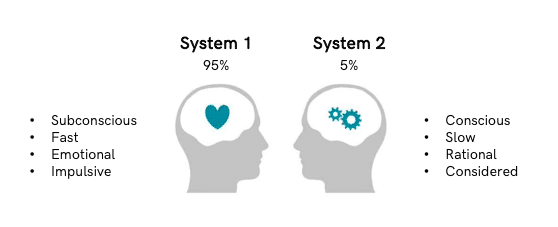Recap with Lotte Gardien – Trends & developments in mobility, changing (travel) behavior sustainably
Sustainable Mobility & the Green Employment Agreement was the topic of the first Fynch Expert Sessies held in Utrecht on the 28th of September 2023.
Lotte Gardien, sustainable mobility & behavior consultant at Syndesmo was our first expert and opened the sessions. In this blog post, we summarize her presentation. She took us through the latest trends and developments in mobility and more importantly, how to change employees’ travel behavior sustainably. This is not only good for the environment, but can also contribute to a healthier work environment and employee well-being.
About Lotte and Syndesmo
Syndesmo helps organizations with issues related to business mobility. Whether this is about a total vision in the field of mobility or about parking policy, the travel expenses plan, the fleet, or overarching themes such as flexibility or sustainability.
Lotte’s work at Syndesmo includes developing new mobility policies and focusing on behavioral change. As a cultural anthropologist, people are always at the center of her work.
We will now look back at her presentation at the Expert Session.
Trends & Developments in Mobility
Employers are increasingly working towards a more sustainable, flexible, and vital mobility policy. They are doing this partly because of sustainability ambitions, due to new laws and regulations, to retain and attract employees and to be an attractive employer.
The following themes are frequently seen among employers:
- Increasingly more opportunities to work time and place independently (TPOW), based on the idea that the most sustainable journey is the one that was not made;
- Sustainable and active modes of transportation are more encouraged;
- Increased use of shared transportation (both within organizations and by public providers);
- A shift to electric transportation (including through the arrival of zero-emission zones);
- The use of smart services, such as Mobility as a Service (MaaS). This is the integration of different forms of transportation into one digital platform (app/map).
- All these changes require employees to change their behavior. But how do you get this done and how can you understand your employees?
The Employee at the Center
If you want to change travel behavior within an organization, agreements must be made and revisited. Clearly stating the options and facilities within an organization gives everyone direction.
In addition, make sure the facilities are in order. Such as good bike racks, shower/changing rooms, lockers, lockers for batteries, etc.
But even if your policies and facilities are in place, your employee may not take the bike. This may be because human beings are complex creatures who do not change just because someone else requests them to. That’s why it’s important to put the human being at the center and immerse yourself in the employee.
Ask yourself questions such as how is my employee traveling right now? What are any barriers to executing different behavior?
It is essential to zoom in and learn about the target audience where change is desired to be seen. Study the current behavior, why is this behavior being shown, and what else is needed to successfully implement the desired changes. This way, insight can be gained and the pain point and barrier can be identified.
Gain insight into employee and human behavior
Back to basics for a moment. How does human behavior actually come about? Unfortunately, no one formula can describe behavior but there are a variety of contributing factors to consider:
- Biological (hormones)
- Psychological (beliefs, norms, emotions)
- Cultural
Behavior arises through the interaction of several of these factors. In doing so, it is also important to realize that humans are not rational beings. Most decisions are made without thinking. This is for a reason because if everything had to be thought about, humans would no longer have a life.
Do you consciously think about how you open a jar, or which hand you use to open a door?
How do humans make choices?
Humans have two brain systems, which contribute to how choices are made:
System 1
- Automatic, unconscious system
- 95% of choices are made by this system
- Works quickly and requires little effort
- Works based on habits
System 2
- Conscious rational system
- 5% of choices are made by this system
- Works slowly and takes a lot of effort
- We use it to analyze and in complex tasks, such as calculations or when problems need to be solved
It is useful to possess this knowledge about our two brain systems if you want to change behavior and influence decision-making.
Why do we do what we do? What are our basic needs?
System 1 is the primary system this system is driven by our basic needs. We’d like to share four of them with you.
Basic need 1: Energy conservation
This need goes back to prehistoric times when being efficient about how to use our energy was essential. Energy was used to hunt and energy was conserved for the rest of the day. In modern times, we no longer have the same challenges, but the basic need to conserve energy has remained.
Energy is conserved by creating habits and convenience. This saves energy and a good example of this is the elephant path shown below.
How can this be addressed? It can be done by keeping it simple. Start by introducing small changes and ask questions to employees. For example, do you want to become more vital? Yes? Would you like to know more about our vitality program? Yes? Come to the meeting sometime, and try it out.
Basic need 2: Security
Providing security gives people a sense of peace, stability, control, safety, and predictability. As such, anxiety and stress can be reduced. This is important to one’s well-being.
Every day a massive number of people get into their cars to go to work. Partly because this provides certainty about the route from A to B. There is knowledge about how long it will take in the worst and best cases, the route is known, the parking options are known, and the route from the parking lot to the office is also familiar. These actions are done without thinking but if it would be necessary to go by public transport there are suddenly many questions and uncertainties involved.
Where does public transportation go? Where do I have to change trains? How long does public transportation take? Which mode of transportation should I take? Do I have to change, and how often?
How can this be addressed? By offering guarantees. For example, if electric transport is encouraged, the employer can give guarantees that if an employee really gets into trouble and there is no charging station available then the employee will be picked up. Or that if all the shared cars are occupied the employee may catch a cab. Knowing that these scenarios will probably never happen. Yet this gives the employee the feeling of having that security that everyone is looking for.
Basic need 3: Conformity
This is about group feeling and feeling connected to others. People want to belong, to be accepted and behavior is adjusted accordingly.
How can this be addressed? Communicate the social norm, for example, “Colleagues work at home 2 days a week” or “We bike to the office when we can”. In addition, look for positive role models within the organization. This way peer pressure and peer influence can be used.
Basic need 4: Autonomy
People need to be able to make their own choices and feel in control of their own lives. When people feel they are being influenced, it creates resistance and this can sometimes trigger the opposite behavior.
How can this be addressed? Involve employees in the change(s) and give people choices (it should be noted that too many choices are also not good because people can then begin to experience choice paralysis).
Finally, Lotte shared some last useful tips that we would like to share with you:
Additional tips to bring about lasting changes in (travel) behavior
- Get started on green employment conditions. Don’t forget to also consider the employee’s environment and amenities.
- Zoom in on your employees’ wants and needs
- Make it easy for employees
- Offer employees security, for example in the form of guarantees
- Give employees a good example and use ambassadors
- Give employees choices (but not too many)
We want to thank Lotte for her inspiring expert session and hope that with this blog you were able to broaden your knowledge. This way we can together work towards a sustainable future around mobility.



